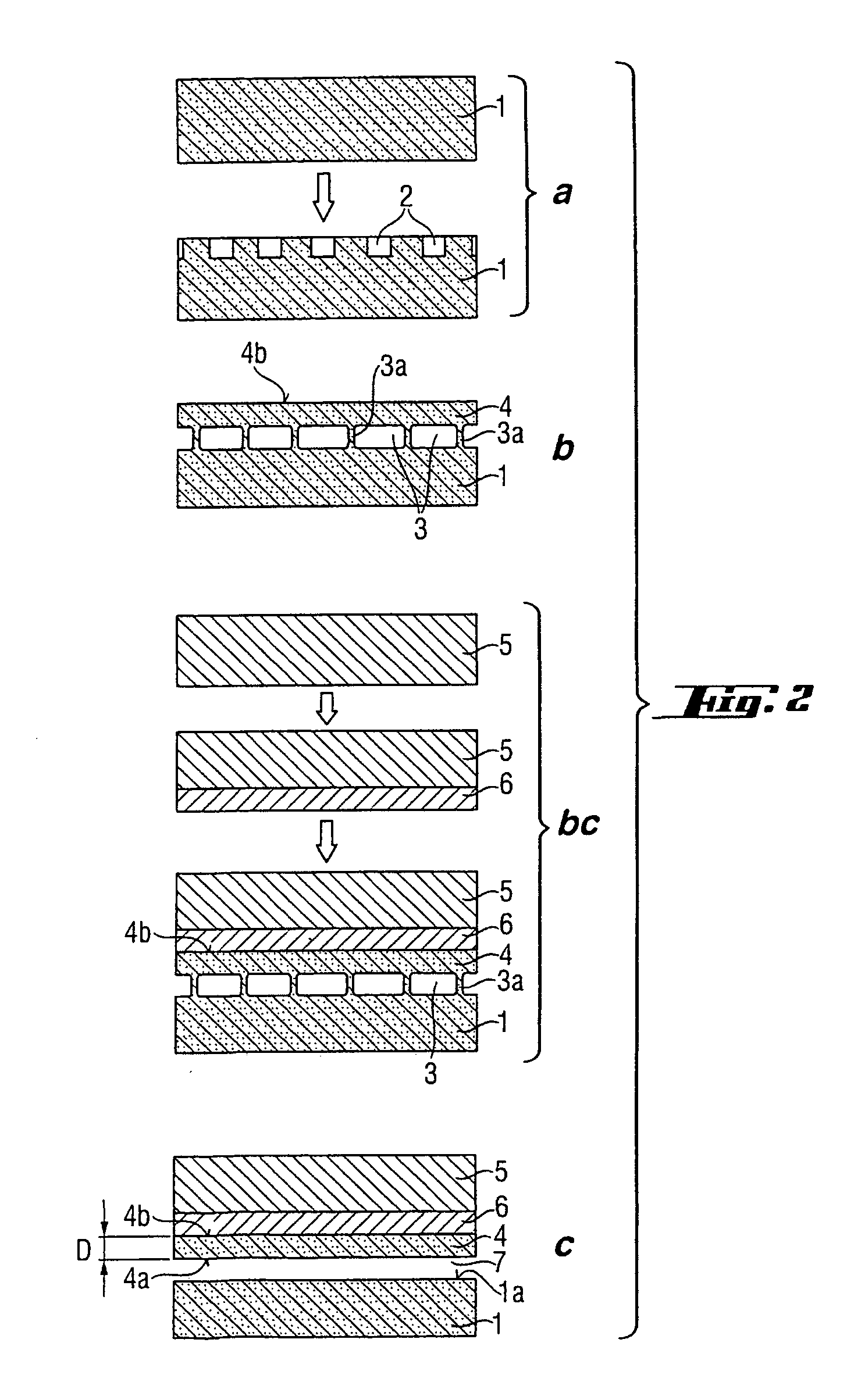Film or layer of semiconducting material, and process for producing the film or layer
a technology of semiconducting material and film or layer, which is applied in the direction of basic electric elements, electrical equipment, semiconductor devices, etc., can solve the problems of large number of defects, large rough surface, and adverse effects of damage on soi wafers, and achieve the effect of reducing the thickness of the silicon layer
- Summary
- Abstract
- Description
- Claims
- Application Information
AI Technical Summary
Benefits of technology
Problems solved by technology
Method used
Image
Examples
example
[0066] The smooth, planar surface of a silicon wafer 1 (FIG. 2) was provided with periodically recurring recesses (trenches) 2 in step a) of the process according to the invention. The trenches had a square cross section with an edge length of approx. 0.5 μm, and the trench-to-trench distance was approx. 0.9 μm. The trenches were arranged in a regular, square pattern. The trenches were produced by ion beam etching in accordance with the prior art, in such a manner that a trench depth of 3 μm resulted.
[0067] Then, the structured surface of the silicon wafer 1 was in step b) closed up by means of a heat treatment which lasts for 10 minutes in a pure hydrogen atmosphere under a pressure of 10 torr, and with a hydrogen flow rate of 10 sccm and a temperature of 1100° C. In the process, the cavities 3 formed from the trenches 2 were widened by approx. 0.25 μm parallel to the closed surface 4 of the wafer. FIG. 3 shows an SEM image of the cavities 3 which have formed and of the closed, pe...
PUM
 Login to View More
Login to View More Abstract
Description
Claims
Application Information
 Login to View More
Login to View More - R&D
- Intellectual Property
- Life Sciences
- Materials
- Tech Scout
- Unparalleled Data Quality
- Higher Quality Content
- 60% Fewer Hallucinations
Browse by: Latest US Patents, China's latest patents, Technical Efficacy Thesaurus, Application Domain, Technology Topic, Popular Technical Reports.
© 2025 PatSnap. All rights reserved.Legal|Privacy policy|Modern Slavery Act Transparency Statement|Sitemap|About US| Contact US: help@patsnap.com



